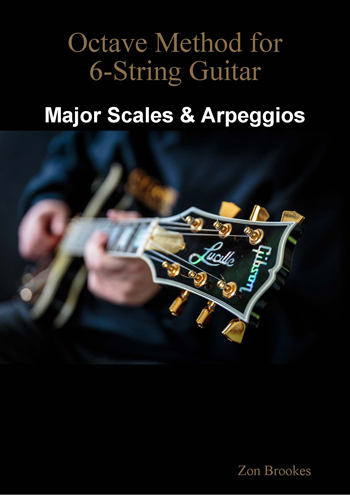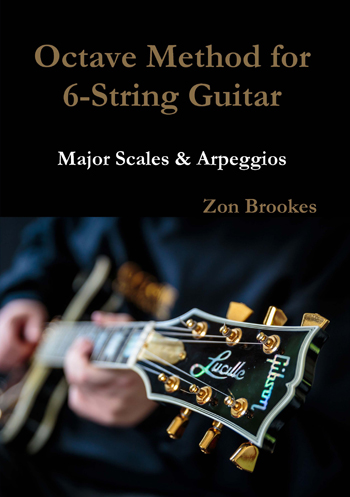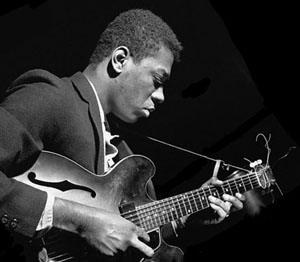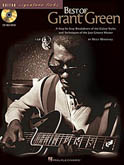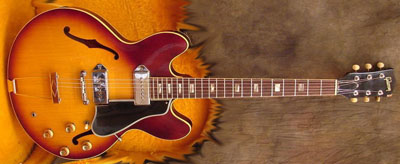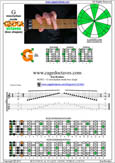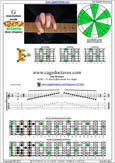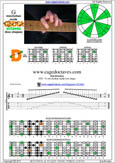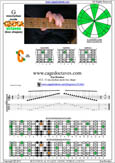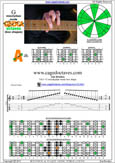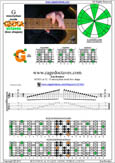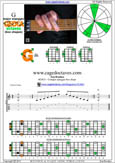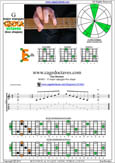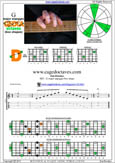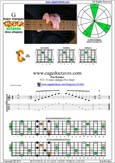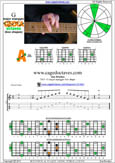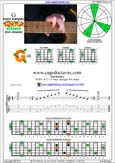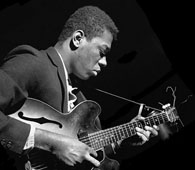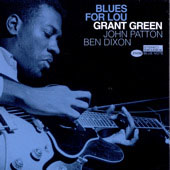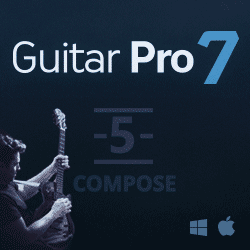Octave Method for 6-String Guitar : Major Scales & Arpeggios
eBook :Octave Method for Six String Guitar Fretboard navigation method for 6-string guitar based on an instrument specific modification of the CAGED guitar method, using linked octave shapes rather than open position chord shapes for ease and simplicity of use. |
Paperbook Book :Octave Method for 6-String Guitar Fretboard navigation method for 6-string guitar based on an instrument specific modification of the CAGED guitar method, using octave shapes rather than open position chord shapes for ease and simplicity of use. |
Grant Green
|
Grant Green is one of the great unsung heroes of jazz guitar |
Grant Green live
Grant Green - Barney Kessel - Kenny Burrell
50 Jazz Blues Licks - #23 Grant Green
|
|
G mixolydian mode box shapes
In BLOGoZON No.45 the box shapes for the G MIXOLYDIAN MODE were presented using
the
GEDCA octaves methodology.

In this weeks BLOGoZON the box shapes for the G mixolydian mode are revisited but this time the undelying 3-note chord/arpeggio is presented i.e. G major.
The easiest example of the mixolydian mode is rooted on G natural - as it is really the C major scale
re-arranged so that it starts with the fourth note (G) rather than the first (C).
Hence the GEDCA octaves sequence is shown for G natural in the diagram that follows:-


The diagrams that follows show all of the G mixolydian mode notes plotted over the 6-string guitar's fretboard in both the ![]() and GEDCA octaves styles:-
and GEDCA octaves styles:-


As always a more long term solution to fretboard navigation is to see scales/arpeggios as INTERVAL shapes rather than note names - as these are universal to all scales, arpeggios and chords rather than specific to one particular root note - with this in mind the intervals for the G mixolydian mode are detailed below in the
GEDCA octaves manner:-

All scales and modes have an underlying triad - 3 note chord - that defines their tonality.
In the case of the G mixolydian mode this is the G major arpeggio - hence the notes for a G major
arpeggio are presented in both the ![]() and GEDCA octaves styles:-
and GEDCA octaves styles:-


Similarly the intervals forming a G major arpeggio are shown next:-

The tables and tabbed panels below detail all five box shapes for the G mixolydian mode and the
G major arpeggio in the GEDCA octaves style.
GEDCA octaves - G mixolydian mode box shapes
|
|||||
|
|||||
- 6G3G1
- 6E4E1
- 4D2
- 5C2
- 5A3
- 6G3G1 at 12
- 6G3G1
- 6E4E1
- 4D2
- 5C2
- 5A3
- 6G3G1 at 12
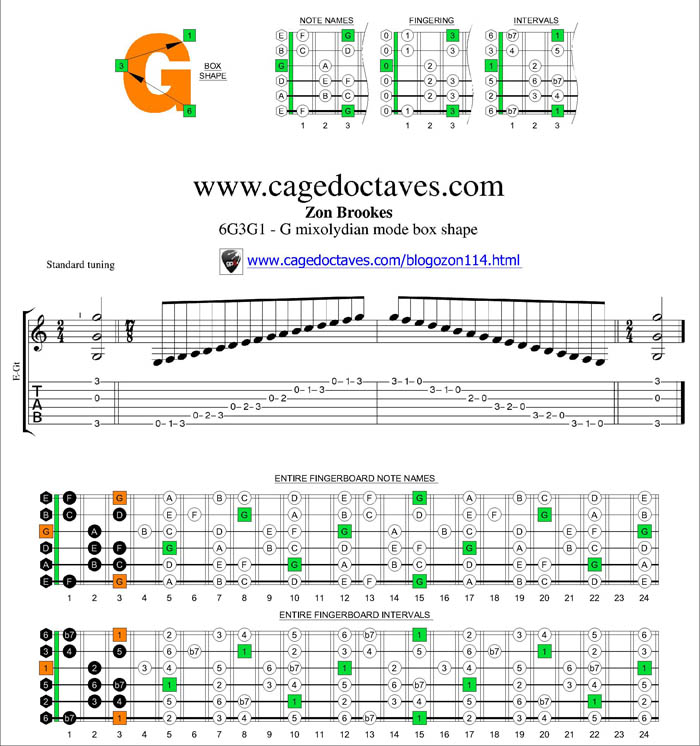
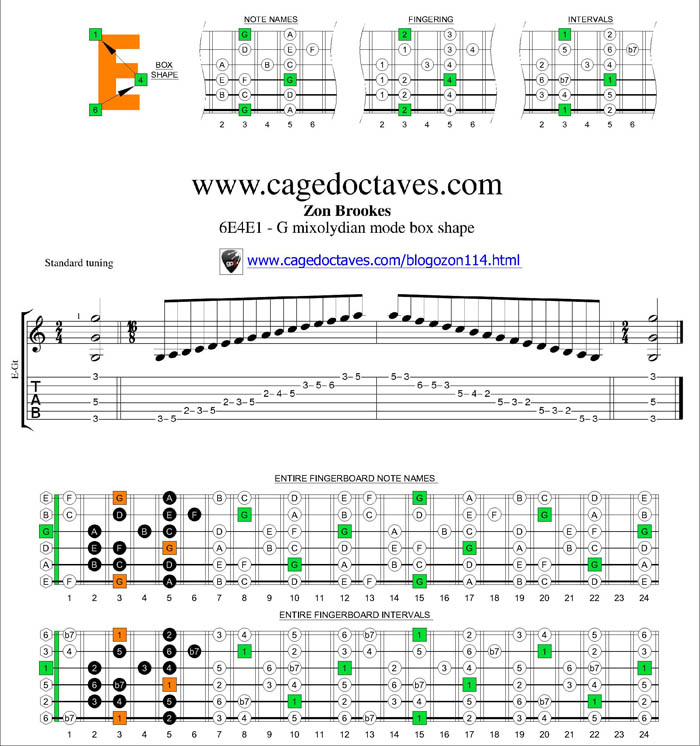
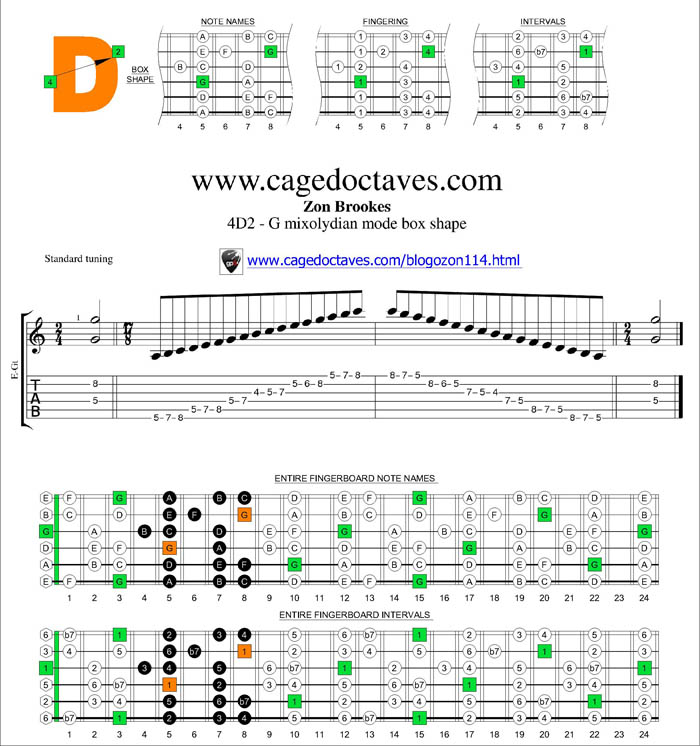
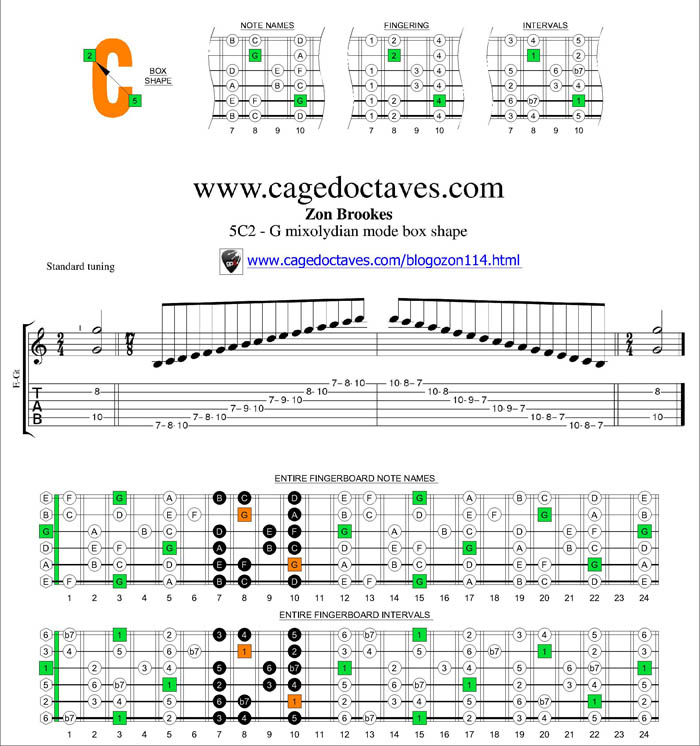
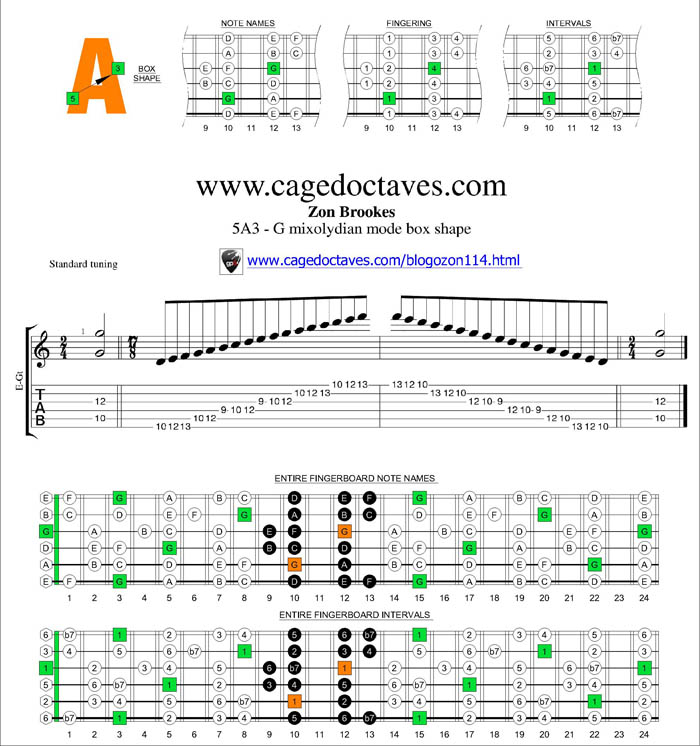
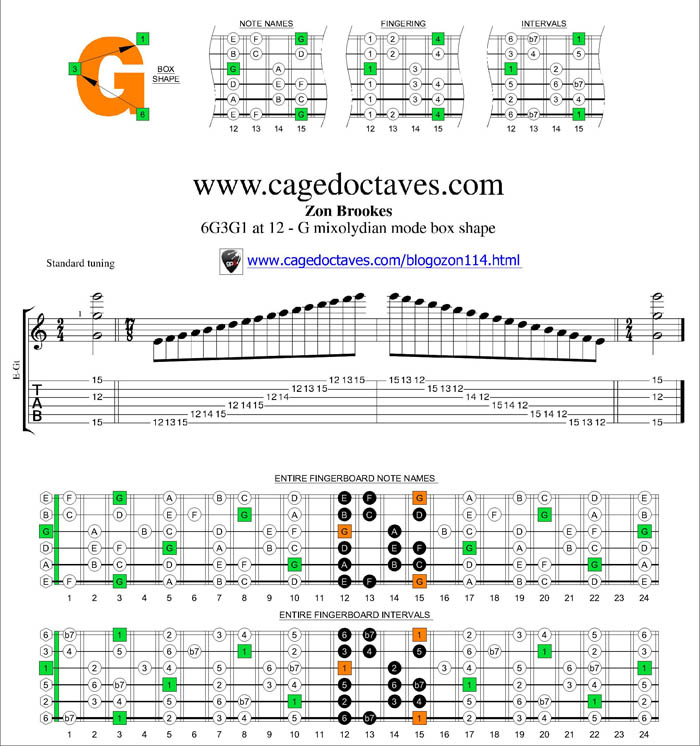
GEDCA octaves - G major arpeggio box shapes
|
|||||
|
|||||
- 6G3G1
- 6E4E1
- 4D2
- 5C2
- 5A3
- 6G3G1 at 12
- 6G3G1
- 6E4E1
- 4D2
- 5C2
- 5A3
- 6G3G1 at 12
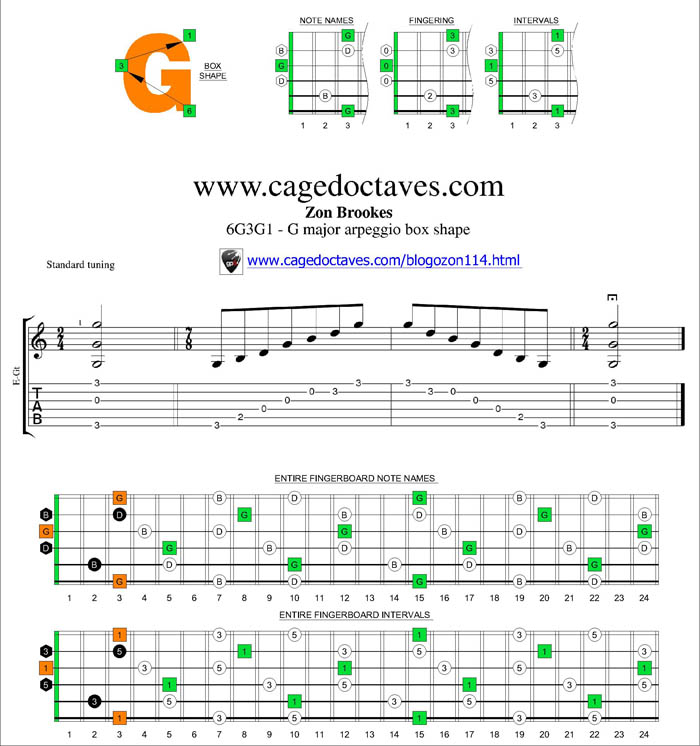
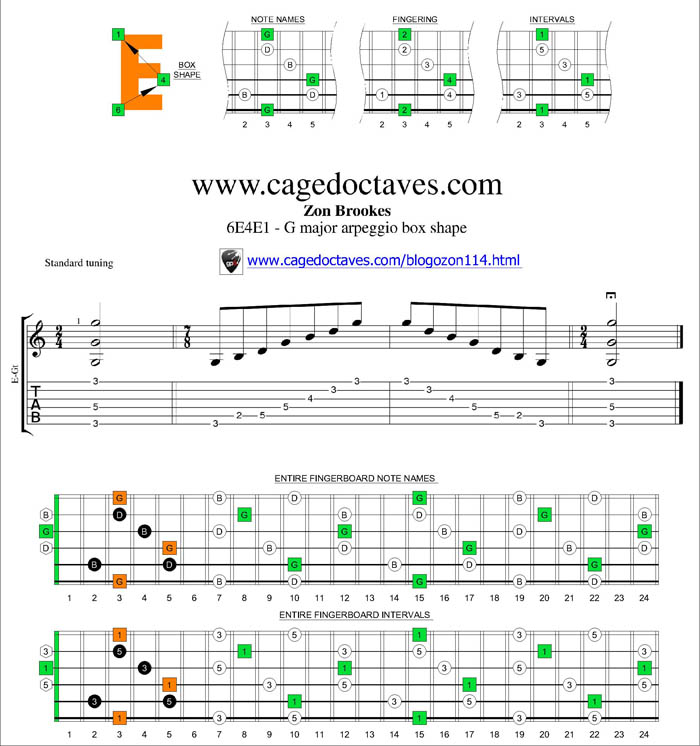
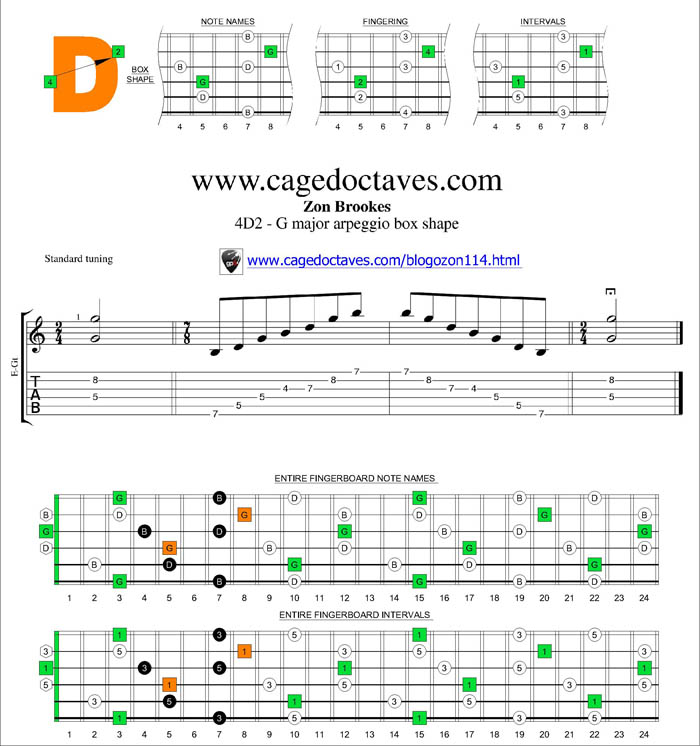
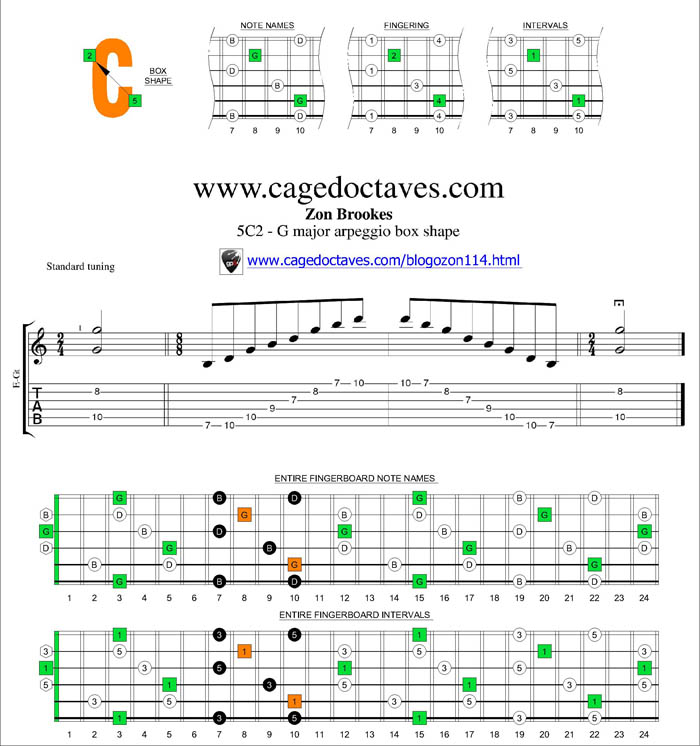
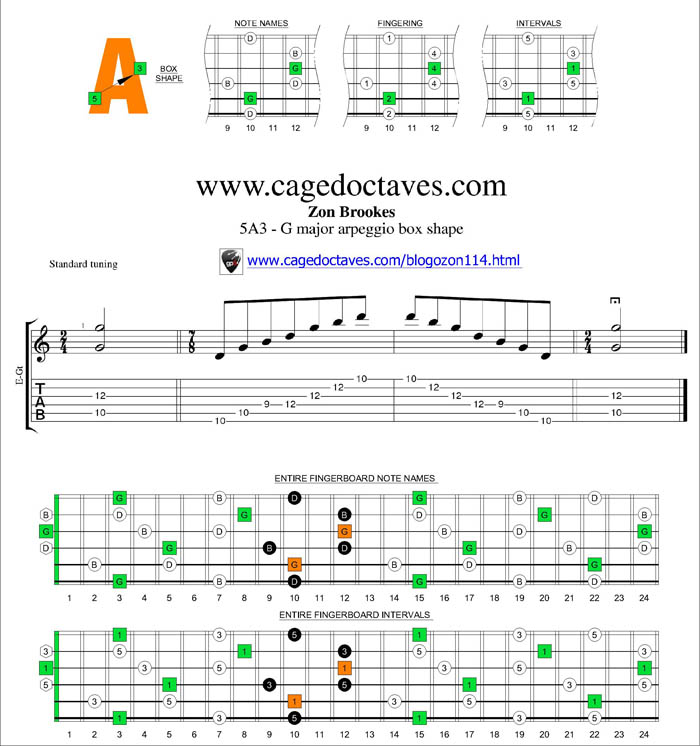
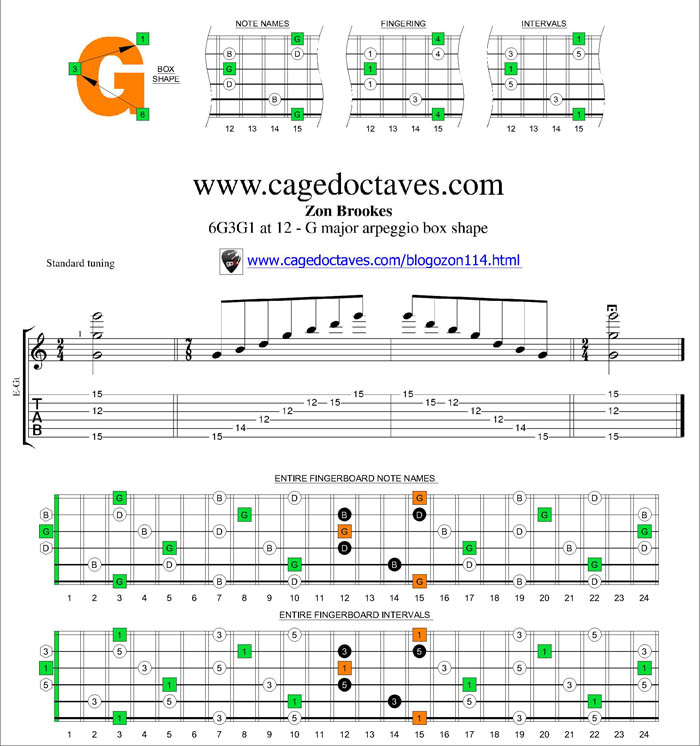
|
Blues for Lou....Zon Brookes |


